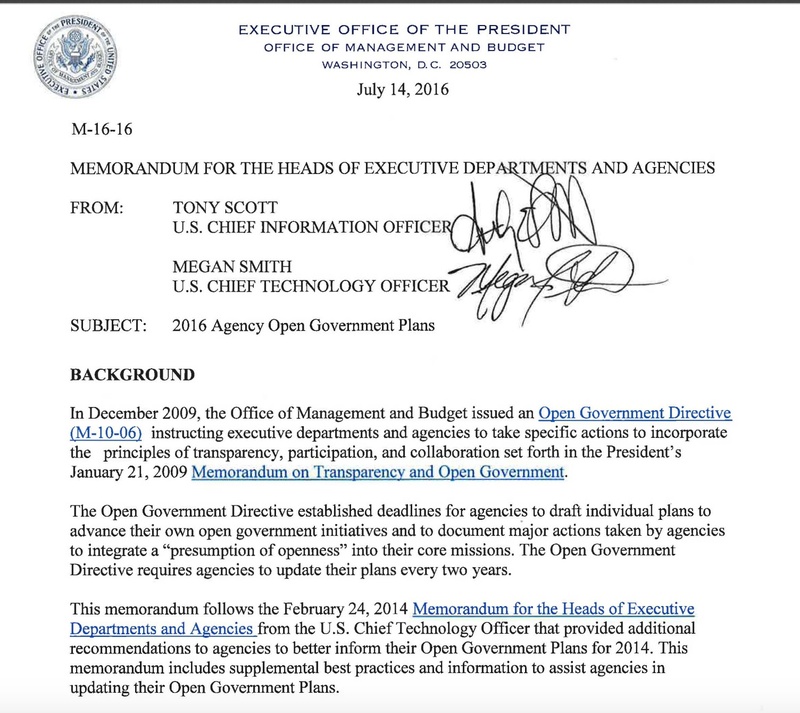White House guidance on open government asks the right questions

On Thursday, the White House Office of Management and Budget (OMB) and the Office of Science and Technology Policy published its long-awaited guidance for federal agencies to comply with President Barack Obama’s 2009 Open Government Directive. The guidance has been stuck in the clearance process for many months, leading Sunlight to call for the White House to release guidance on open government plans.
While this is long overdue, we’re still thrilled to see a comprehensive set of guidelines from U.S. Chief Information Officer Tony Scott and U.S. Chief Technology Officer Megan Smith that will not only empower agencies to assess their own progress, but for the broader public to learn more about the initiatives that the U.S. government has pursued.
We are disappointed, however, that the memorandum was not accompanied by a new version of OMB’s open government plan — the last time that document was updated was 2010. We’re also disappointed to see that the guidance was released as a PDF with inactive hyperlinks, although that’s a minor issue in the broader context of these issues.
Now that federal agencies have received the memorandum, including OMB, they have just two months to work on answering the mandates and questions posed in it. According to the guidance, updated plans should:
(a) provide highlights or an overview of achievements from your agency’s 2014 Open Government Plan;
(b) include status updates on major initiatives listed in preceding plans;
(c) expand upon your agency’s past open government efforts;
(d) introduce new open government initiatives for the next two years;
and (e) include links to additional relevant information on your agency’s website. Plans should include anticipated completion dates for initiatives that are not ongoing activities.
More than six years on from the Open Government Directive, the specificity of what “open government” means in the federal government in 2016 can be meaningfully explored through the prism of these questions.
Consider the topics that the guidance directs agencies to explore: Open data. Proactive disclosures. Privacy. Whistleblower protection. Websites. Open innovation methods. Access to scientific data and publications. Open source software. Spending information and the DATA Act. Participation in transparency initiatives. Public notice. Records management. Freedom of Information Act requests. Congressional requests. Declassification. Public participation and collaboration. A “Flagship Initiative” and /open webpages.
While the president’s pledge to run the “most transparent government in history” has proven to be both controversial and difficult to achieve, we expect to see an accounting result from this guidance that will not only inform the public about what has been done in their name but provide a foundation for continued efforts in the next administration.
If the result of the self-evaluation are weak or incomplete plans that highlight how agencies have fallen short in achieving their goals, that will be a useful outcome for building upon those lessons. If the results show meaningful progress, it will be a useful indicator of whether this approach to making government more transparent and accountable is worth preserving, extending and strengthening. If agencies do not provide any plan at all, that will serve as its own answer for the priority the Open Government Directive has occupied in their governance.
Corinna Zarek, the deputy United States chief technology officer for open government, asked the public for open government success stories in the White House blog post introducing the guidance. She requested that you send them to the Open Government discussion group, email opengov@ostp.eop.gov or tweet them and tag @OpenGov. Zarek also encouraged the public to share ideas that agencies should include in their Open Government Plans directly with those agencies or to share them with the White House using those channels. We hope you will do so.
Sunlight will be reading and evaluating each open government plan as they come online and will follow up on Sept. 15 to see how the agencies have complied.

